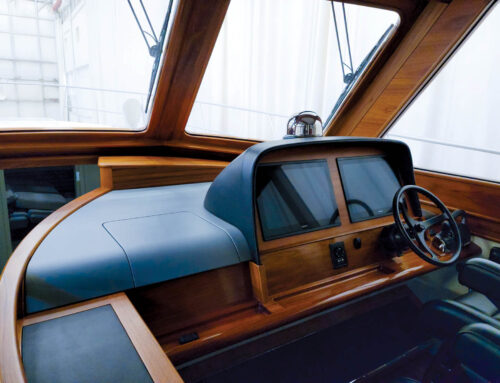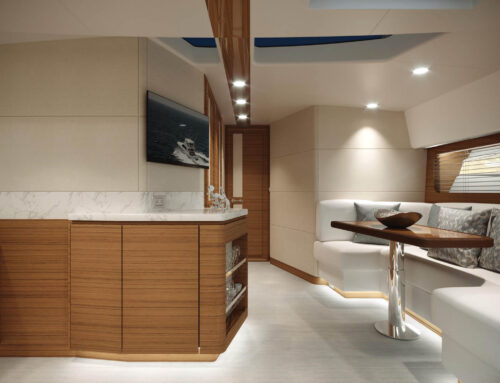Making custom projects look easy
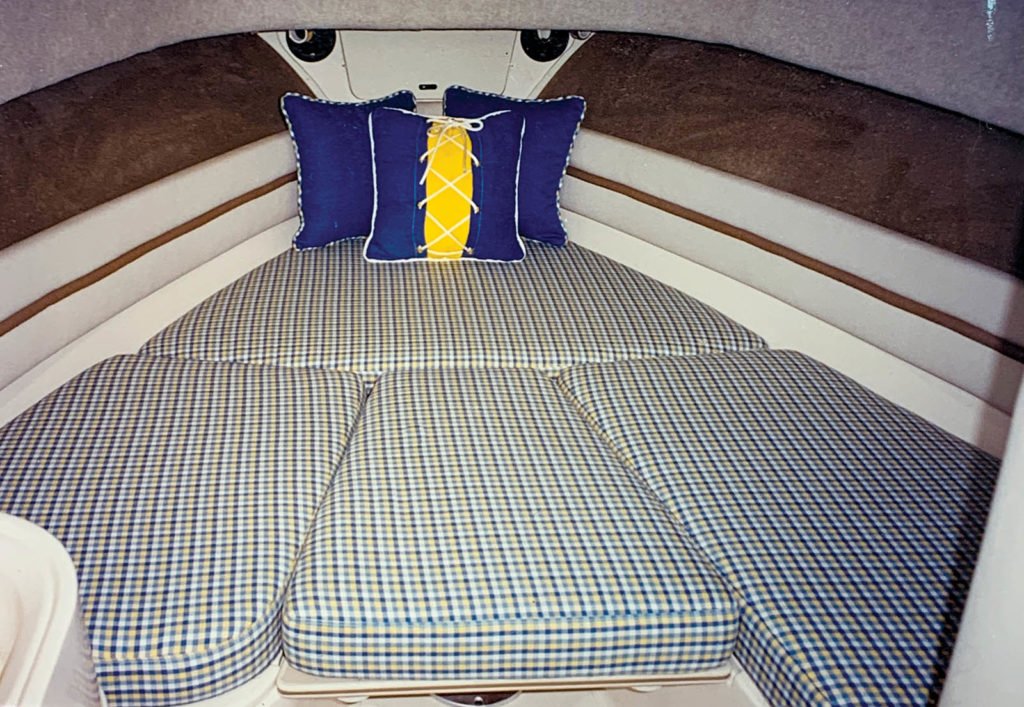
by Terri Madden and Alayna Wool
A frequent challenge of our job as marine fabricators is making new marine interiors look like they could be featured in a Hollywood movie. Custom jobs require the skill set and flexibility to accommodate demands out in the field as well as the knowledge and expertise to work with sophisticated materials and industrial machinery.
When the Bertram 31 debuted in 1961, it was an immediate sensation in the yachting world. The deep V-hull signature design gave owners an advantage by moving quickly and comfortably in rough waters. There were five classic designs produced until 1986 for this vessel, and it has seen numerous interior and exterior seating changes continue up to the present day. Given its popularity, this vessel is an example of the type of custom project that will likely cross your path someday and require your fabrication skills.
Marine customers enjoy buying and selling not only classic and traditional vessels, but also vessels with the latest technological advances to make their time on the water more enjoyable. It is often during this purchasing process that you will be called upon to provide magical solutions to transform a vessel with “good bones” into a showstopper by giving it something commonly referred to as a “facelift.”
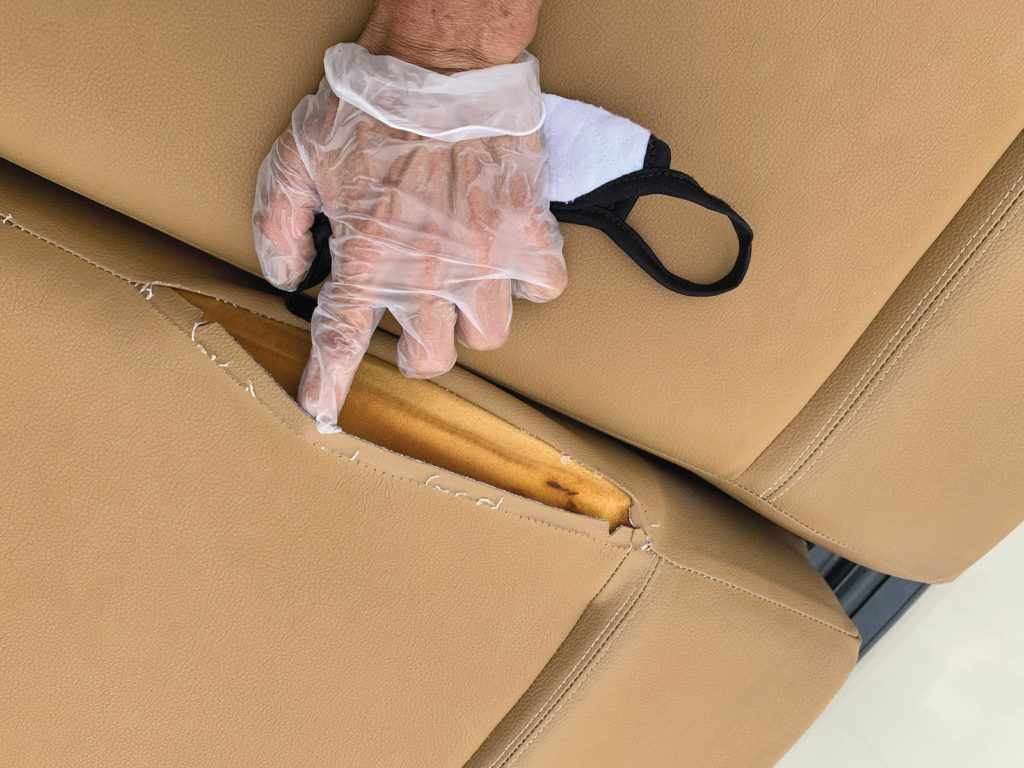
Client ABCs
The facelift magic begins by listening to a customer’s concept and then developing a plan that will work within the structural parameters of the vessel. To successfully execute the project, it’s important to first understand if you’re working with an A, B or C client:
- A = Extraordinary/Designer Materials
- B = Moderate
- C = Cheap and Cheerful
You should have management and team protocols in place for dealing with each type of client. For example, your team must understand the demands of providing “white glove” service for an “A” client and possess the know-how to meet the expectations of a “C” client within time and budget constraints.
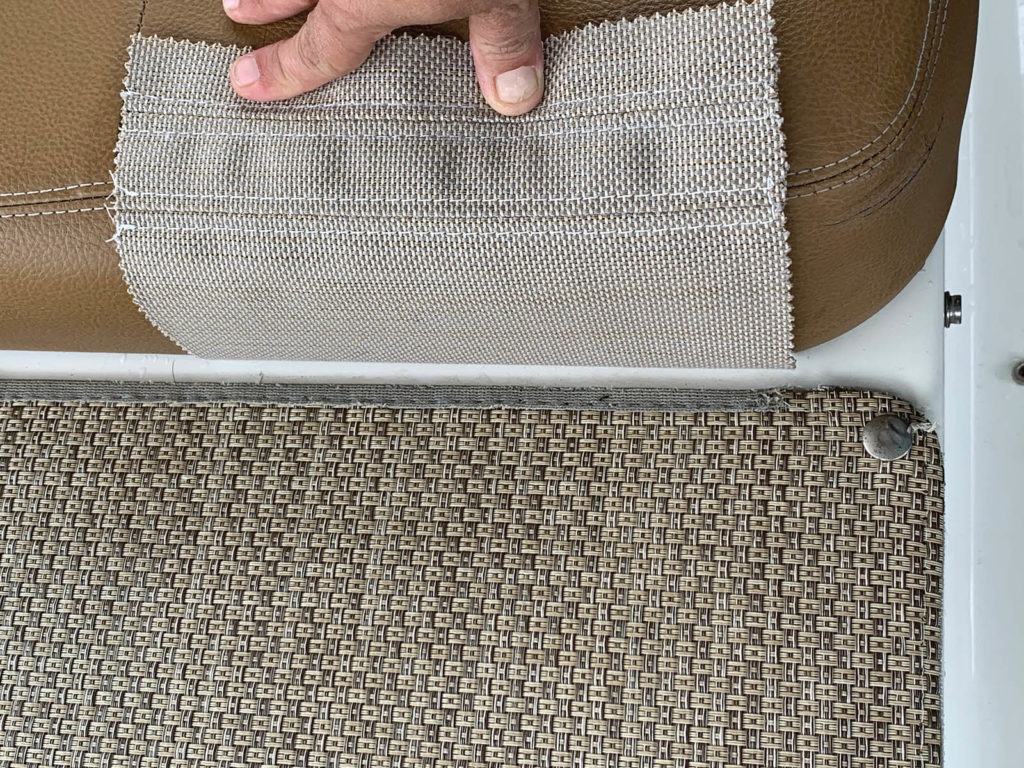
Manage third-party opinions
During client meetings, opinionated family and friends can quickly alter a client’s original decisions. It is not uncommon for a customer’s friends to act as designer “know-it-alls.” Head this off by limiting attendees at project meetings to your team and two client representatives: such as spouses or siblings. Verify whether a designer will be involved at any point in the project.
If you find yourself in a situation where third-party opinions confuse the fundamental scope of the project, positively reinforce how the client’s original decision will prove to be a steadfast option based on the previously agreed-upon design. If this situation is not extinguished promptly, postpone or reschedule the meeting. Otherwise, the project could be delayed endlessly, and you may never see a deposit.
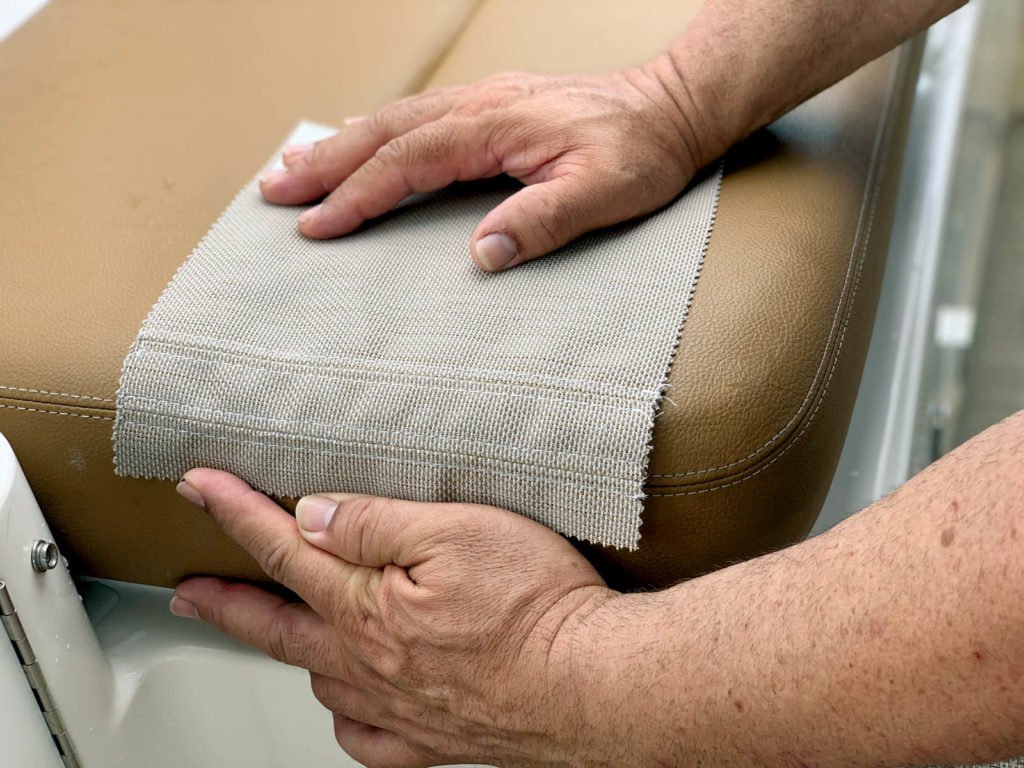
Job scope
It is critical to thoroughly understand the scope and details of the job to prevent problematic communications, such as when the boat captain has been told that your crew will be at the vessel but doesn’t completely understand the work you will be performing.
Have clarity about your balance payments, installation and essential dates. Knowing exactly how much you are to be paid helps ensure you will get paid properly on delivery!
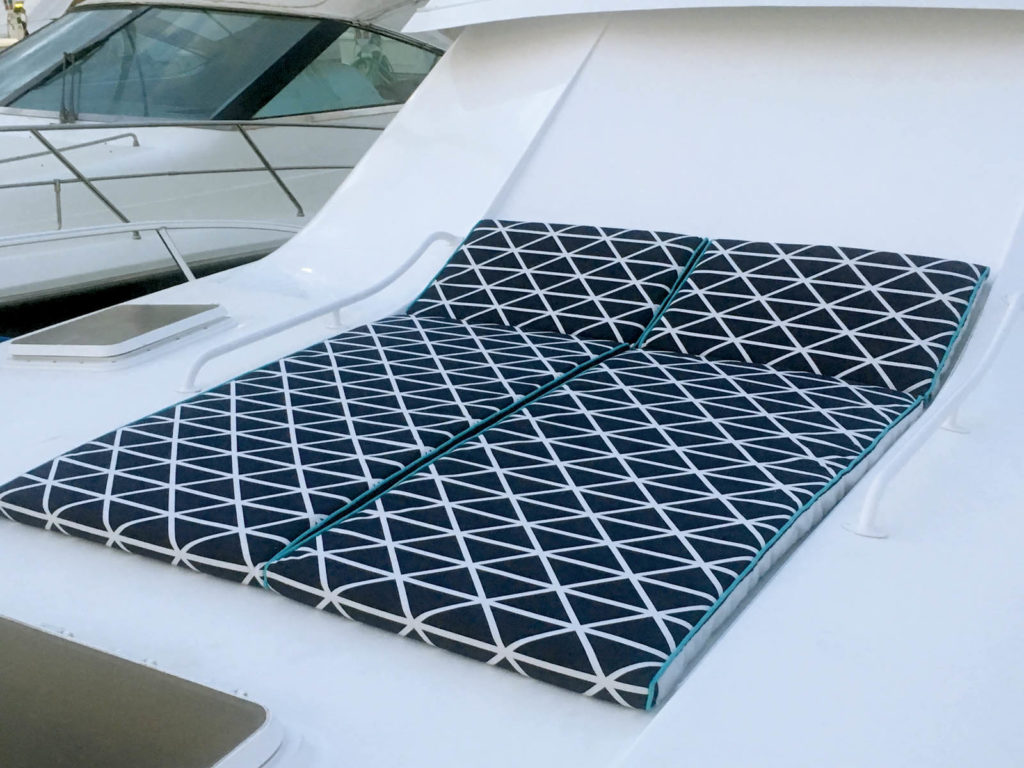
Materials considerations
To ensure your chosen materials meet the demands of the project, it’s helpful to consult the resources provided by the Association for Contract Textiles (ACT) for materials performance guidelines. This trade association provides a free downloadable guide with information about how to select appropriate materials (visit www.contracttextiles.org).
After completing the project, you will also want to provide materials specifications to your clients so they can maintain their new upholstery. Include sew-in labels available from major material and thread manufacturers that support the Marine Fabricators Association (MFA).
- Consider the following when selecting and working with materials:
- Compensate when changing from a tightly woven material to a loose weave or vice versa.
- Compensate when changing from a stretch material to a nonwoven or from vinyl to leather.
- Don’t be afraid to call your supplier and ask for the recommended usage and applications for the material you and your client are considering. Suppliers often have specification sheets with information about best practices for working with specific materials. This includes working with stretch fabrics, special finishes and backings, and sewing specifications for threads in order to avoid delamination, deterioration or separation (when stitches tear between needle perforations of enlarged puncture holes).
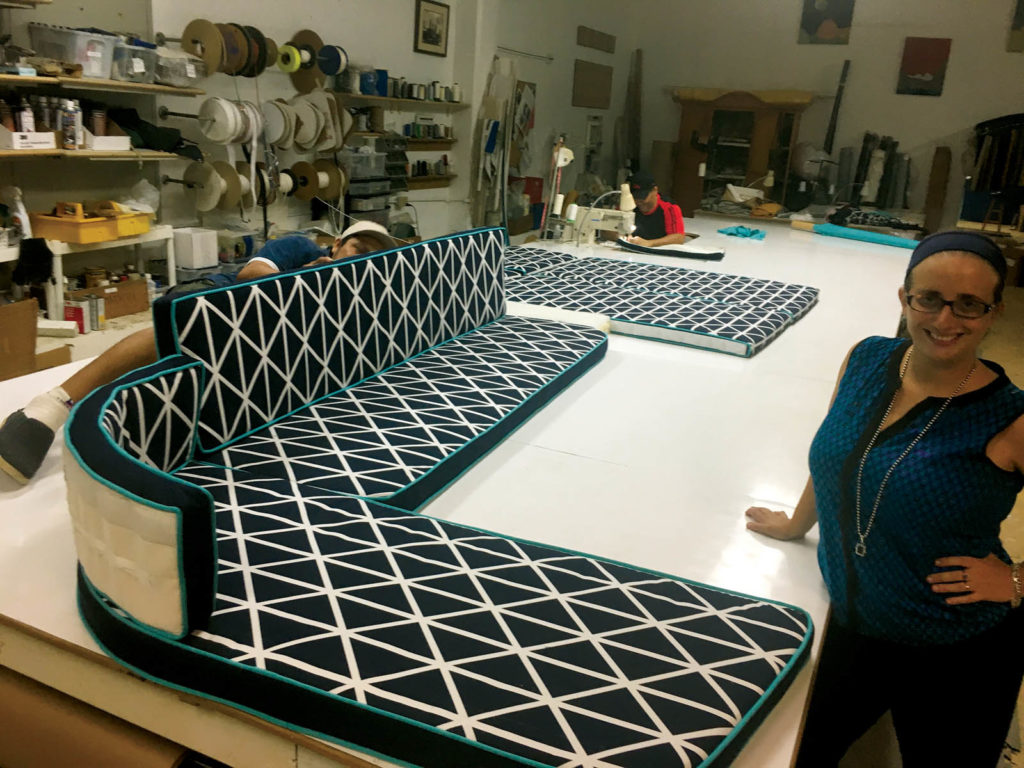
Final caution
Do not assume anything is symmetrical on a vessel. Everything must be measured and recorded accurately. Develop a standard measuring system with your team. When we are measuring, it is serious business. This prevents second-guessing on jobs when you are back at the shop, and it ensures your projects will be perfect—better than new—when you return them.
Terri Madden (LegendTerri) and Alayna Wool (Ms. Alaynious) are a mother/daughter team who co-own Sand Sea & Air Interiors Inc. in sunny San Juan, Puerto Rico. www.sandseaair.com
SIDEBAR: Checklist
- Verify final height, width, length and depth
- Verify final size and measurements
- Assess the impact of requested changes on delivery times and final invoice
- Verify final materials are appropriate for the end use
- Confirm foam type and height
- Confirm thread size and color
- Confirm seam stitch and provide samples for approval
- Confirm topstitching (single vs. double) at side seams
- Fabricate samples for final approval prior to starting
SIDEBAR: “Simple requests” that are not simple
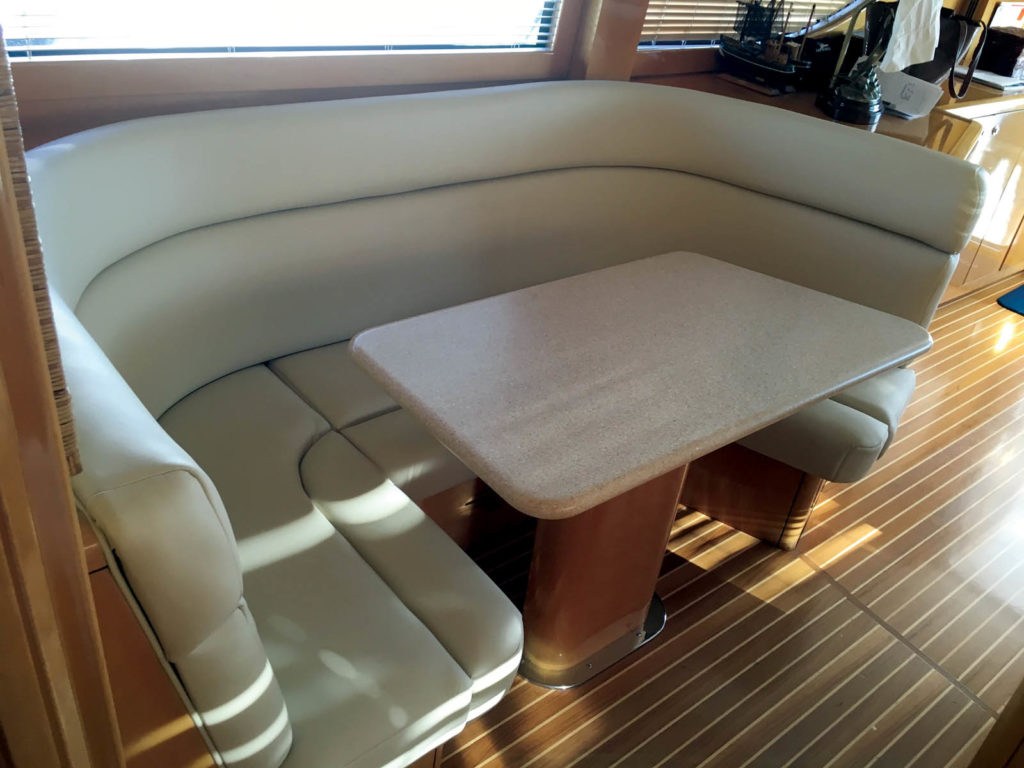
#1 Direction change for a dinette or salon sofa
This request often happens when manufacturers change the direction on corner dinette frames from horizontal to vertical designs. It makes something that was popular in one year appear outdated in the next. Unfortunately, it often results in customers wanting the impossible, as it requires changes in framing that can be extremely tricky if the inherent properties of the frame do not support the new design.
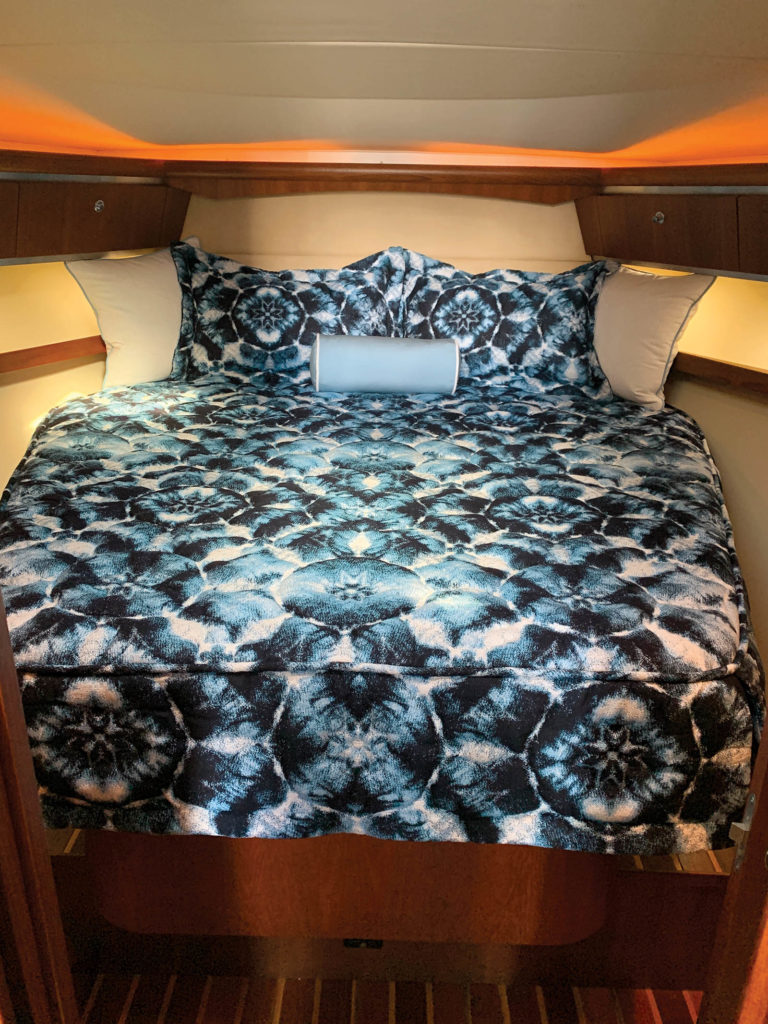
#2 Problematic material choices
• Patterns with large repeats generally require additional yardage. For example, master cabin mattresses are generally more than 70 inches wide. Since fabric is generally 54 inches wide, depending on the material pattern, you can do a center join or use the main panel down the center with equal sized panels evenly distributed in width to each side of the center panel. Be sure to purchase sufficient yardage, especially for the distance of a pattern repeat to ensure matching seams.
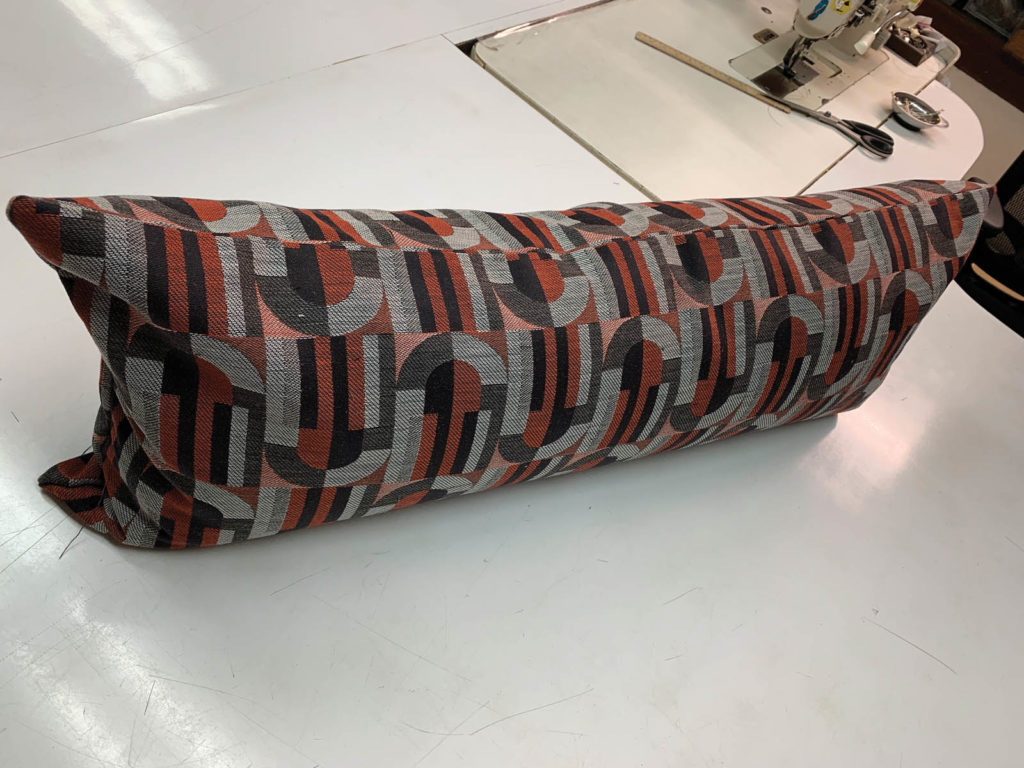
• Always measure/pattern the space where a piece of furniture will be located. When working with different materials, understand how minor changes in each one’s thickness can affect its fit. Even a slight variation of 1/8 inch can cause materials to wrinkle.
• Consider the width of the material you are purchasing and the length of material you need. Ensure you won’t have to join sections together with unsightly seams because your client has chosen a material in an unusual width. Also confirm the direction of the weave and/or repeat pattern.
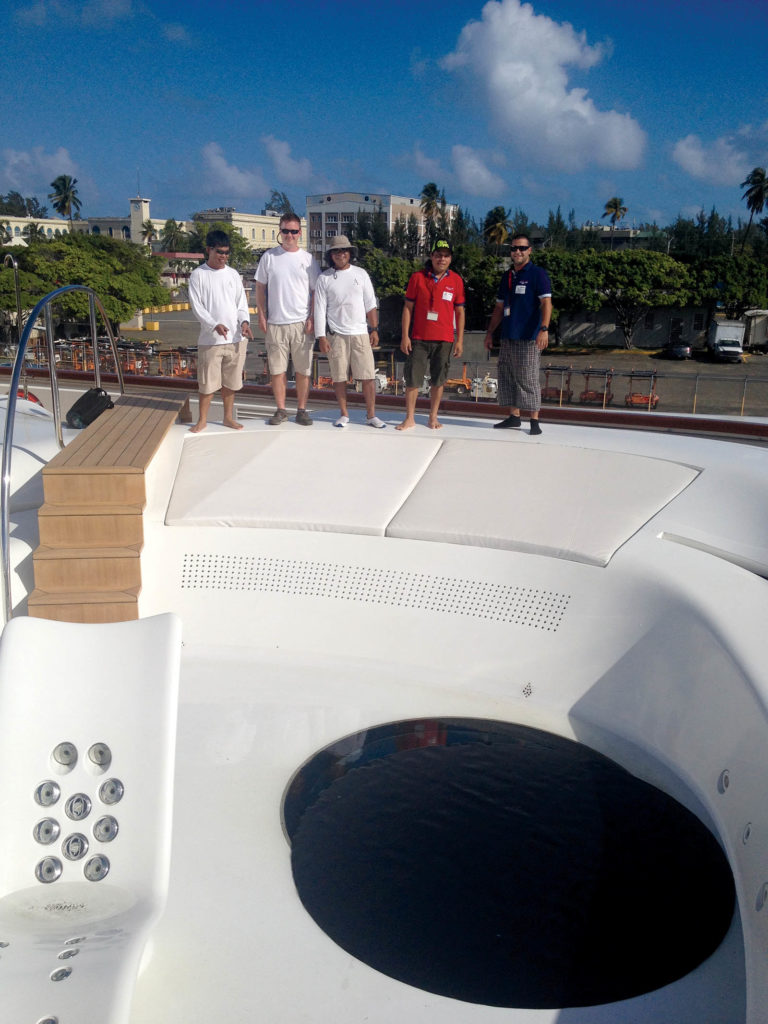
• When working with a solid material, verify that all the material sections are cut and assembled in the same direction when unrolled from the bolt to avoid any inconsistencies in color tone. As an example, a white vinyl cushion face was patterned as it was unrolled from the bolt, and the tone was a very different shade when the adjoining panel was patterned as it was unrolled toward the bolt. When the cushion panels were side by side, it was not noticeable, but when photographed, the difference was remarkable and the panel had to be replaced.
 TEXTILES.ORG
TEXTILES.ORG 


